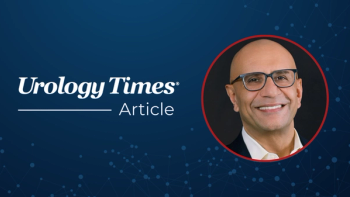
Urologist offers pointers on implementing Jelmyto program

In this interview, Kenneth M. Kernen, MD, describes his practice’s Jelmyto program and offers advice for urologists interested in implementing it in their practice.
Mitomycin-containing reverse thermal gel (Jelmyto) was approved by the FDA in April 2020 for the treatment of low-grade upper tract urothelial carcinoma. In this interview, Kenneth M. Kernen, MD, describes his practice’s Jelmyto program and offers advice for urologists interested in implementing it in their practice. Kernen is a partner in the Michigan Institute of Urology (MIU), P.C. and the Director of Research for MIU.
What prompted you to start the Jelmyto program at MIU?
One of the things about our group is that several of us have done oncology fellowships. We're always trying to push the envelope and adopt new things. One of the things about running research is we're always looking for new things to treat patients with. We were actually part of a research study with Jelmyto, so once it got approval, we really wanted to be out there promoting it. It's really been great for our patients. Anything we can do to preserve kidney function and alleviate big surgeries for our patients, obviously, that's a great thing. We don't want to sacrifice quality or efficacy, but thiswas such a great, great product that we thought it was important to offer to our patients.
How has MIU's experience with Jelmyto been so far? How have patients tolerated the treatment?
With regards to patient safety and tolerability and overall acceptance, when you tell patients that there's a potentially a treatment that could preserve your kidney and save you from a major surgery, they obviously are very interested in that. It's a little bit of a hassle because they have to come in on a regular basis and go through a procedure. But if you compare Jelmyto with major laparoscopic surgery, it's a pretty easy trade-off for our patients. We've had great success with it. I would say 80% of our patients have responded favorably and we've been able to avoid major surgery for them. From a side effect/tolerability standpoint, there have been a few minor things that you would expect: a little bit of bleeding, a little bit of discomfort after the procedure, things like that, but there have been no major side effects that have caused us to cancel a program within a patient's treatment.
Could you describe the progress for implementing this as a service line?
We do a lot of advanced therapeutics whether it's immunotherapy with Provenge [sipuleucel-T], or radiopharmaceuticals like Xofigo [radium 223] or dispensing advanced oncolytics like Xtandi [enzalutamide] and Erleada [apalutamide]. We have a nurse navigator that basically runs those programs. She and I sat down and designed the plan. She needs to be in charge of the logistics around it, getting it approved and things like that. I would say most big urology groups at this point have an advanced prostate cancer center [APC], an advanced prostate cancer champion, or a nurse navigator. Honestly, I think it drops very seamlessly and easily into that program. I don't see it as a big issue. You don't necessarily need to reinvent the wheel, you can just kind of borrow the wheel. The patient numbers are not like prostate cancer; it's a much lower number, so it was really pretty easy to onboard.
What advice would you give to other practices looking to implement Jelmyto in their practice?
Be open to it. Always be open to new technology. I think from a logistic standpoint, you want to have 1 person running it, so probably the nurse navigator who runs your APC is probably the right person. It's not difficult; there's just a bunch of little moving pieces that all have to line up. The other question is, do you do this with a stent from below, so that they need a retrograde pyelogram every week? Or are you going to transition that to potentially doing percutaneous nephrostomy tubes? We did some of our early ones from below with retrograde pyelograms and anesthesia and things like that. Those patients did well, but obviously, that's a little bit of a hassle. So I would say the majority of our last 5 to 7 patients have been done through percutaneous nephrostomy tubes. That really streamlines the workflow. It's much easier for the patient; those patients have been very happy. You don't really have to carve out special time for your office, so it's no different than doing a flexible cystoscopy in the office. Basically, everything's already prepped, you walk in, you administer the the medication, and then you're done. It doesn't disrupt workflow. I think that's one of the biggest things that people potentially are worried about.
Is there anything else you feel our audience should know about this topic?
The biggest thing is be looking for those patients. It's a small number of patients, so the question is, how do you find them? It's about educating your partners to say, "Hey, if you have someone with low-grade UTUC, there is an alternative. So when you see those lesions, think Jelmyto." Our nurse navigator is always looking at our pathology reports, because we're running a fair amount of clinical trials and we're always looking for patients. That's the key: getting that educational component out there that there is an alternative treatment and the efficacy is great.
Newsletter
Stay current with the latest urology news and practice-changing insights — sign up now for the essential updates every urologist needs.


















